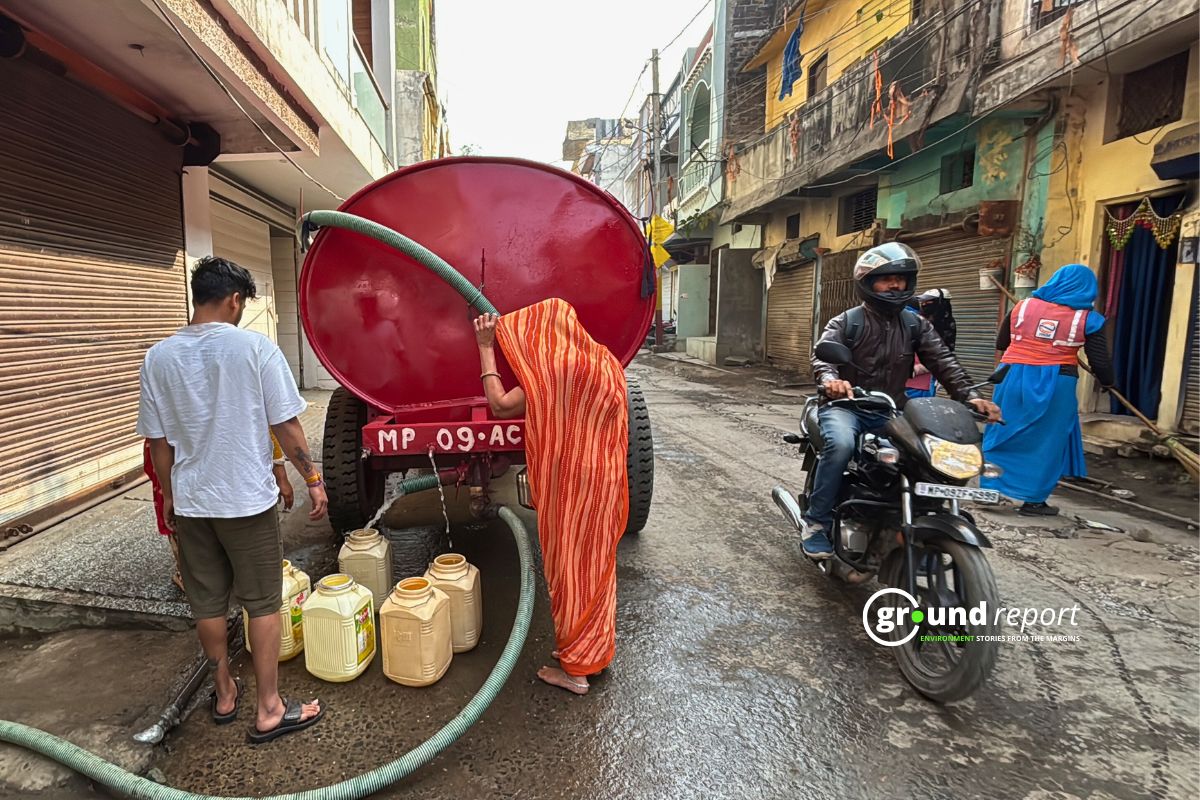In Indore, there are 19 zones and 85 wards. On average, each ward has 600 commercial establishments and 6,000 households. The garbage is collected separately– wet and dry waste– in the city i.e. the garbage is separated at the source. The city generates 1,115 Metric Tonnes Per Day (MTPD) of waste in total. Of the overall waste, wet or organic waste makes up 58.25%, dry waste makes up 41.75%, and household sanitary and hazardous garbage makes up 5%. In all, 465 MTPD of dry waste and about 650 MTPD of wet garbage are produced.
Garbage generators are divided into three groups based on the amount of waste they produce– domestic, semi-bulk, and bulk generators. Domestic generators produce less than 25 kg of trash per day, semi-bulk generators produce 25–100 kg, and bulk generators produce more than 50 kg.
The total wet waste of 650 tonnes/day produced in the city is treated at three different Bio-CNG plants– Choithram Mandi, Kabitkhedhi and Devguradia. These use biomethanation to generate energy. Biomethanation is a process by which organic material is microbiologically converted under anaerobic conditions to biogas.
Indore Municipal Corporation (IMC) has established three different types of garbage transfer facilities at eight sites. They are situated in several places around the city, including Rajshahi, Dakkanwala Kua, Star Square, Kabit Khedi, F-sector, Sangam Nagar, Sirpur, Dhar Road, Lalbagh, and Crystal IT Park.
Asia’s Largest Bio-CNG Plant
The Indore plant at Devguradia generates Bio-CNG gas with more than 95% methane. It is set up under the Public Private Partnership (PPP) model by Indore Municipal Corporation (IMC) and Indo Enviro Integrated Solutions Limited (IEISL). This Bio-CNG plant processes 550 tonnes of wet waste from municipalities each day. After the waste is processed, it yields around 17,000 kg of bio-CNG gas and 100 tonnes of organic compost.
“Approximately Rs 200 crore is spent annually on garbage management. A portion of the funds used for this expense come from garbage. For example, a royalty of Rs 1.6 crore comes to Indore Municipal Corporation from this plant,” informed Mahesh Sharma, Superintending Engineer at Indore Smart City Development Limited (ISCDL).
Ground Report has earlier reported on the significance of this plant for the city and its public transport. However, the project anticipated a clean fuel supply of 400 buses/day. However, the current reach is only 40-50 buses. Also, the IMC was expected to earn Rs 2.5 crore per year from this bio-CNG plant. This number too lags behind its target.
Sharma highlighted the concerns of fewer private bus operators willing to use clean fuel. He adds,
“Right now the gas generated goes majorly (above 50%) to Avantika Gas Limited (AGL) and a few other industries. However, the use of public transport can be raised.”
Out of the remaining total wet waste of 100 tonnes, 35-40 tonnes is treated at Choithram and Kabit Khedi, and the rest is used in different ways to make compost.
Other Two Bio-CNG Plants in the city
Choithram Mandi is one of the largest mandi (wholesale fruit and vegetable markets) in Central India. Approximately 20-25 MTPD fruit and vegetable waste is generated daily. Earlier, the waste was collected and transported to the centralised waste processing at Devguradia, and the disposal site of IMC, which incurred heavy transportation and manpower costs.
Indore Municipal Corporation has established a 20 TPD bio-methanation plant in Choithram Mandi to produce and utilise Bio CNG from municipal solid waste processing. The plant generates approximately 6 tonnes of organic manure and 600 kg of biogas daily.
The current biogas plant produces cleaner fuel for transportation while reducing pollutants and treating wastewater with zero discharge. To create bio-CNG for public transit, the Indore Municipal Corporation (IMC) and the Indore Smart City Development Limited (ISCDL) have partnered with Mahindra to launch a bio-methanation project. Murlidhar who supervises this Bio-CNG plant said,
“This plant was established in 2018, and it reduced the amount of waste that was transported to the central facility by up to 9 kilometres.”
While this plant deals majorly with the wet waste from the fruit and vegetable market, a 15 TPD capacity bio-methanation plant at the Kabit Khedi sewage treatment plant, also, the city’s hotel garbage handled by the plant.
“We are trying to optimise the capacities and resources we have to increase the revenue for the city and promote renewable energy,” Sharma told Ground Report.
Way Forward
The amount of waste produced every day in Indore is expected to rise from 1,200 metric tons to 2,000 metric tons by the next decade. Compared to other cities, Indore has managed to treat its waste better. However, Sharma argued,
“We are focusing on reducing this waste and restrict it to a maximum of up to 1,500 metric tons.”
Indore City has been awarded the title of cleanest city for seven consecutive years. However, Sharma believes with more awareness of clean fuel, the adaptability of public vehicles can be increased. With its bio-CNG plants, the IMC also plans to promote efforts on home composting to reduce the wet waste procured from households. Sharma believes it will also promote awareness among the citizens and allow them to contribute to the management process.
Follow Ground Report on X, Instagram and Facebook for environmental and underreported stories from the margins. Give us feedback on our email id greport2018@gmail.com.
Don’t forget to Subscribe to our weekly newsletter, Join our community on WhatsApp, Follow our Youtube Channel for video stories.
Check out Climate Glossary to learn about important environmental terms in simple language.
Keep Reading
Will Viability Gap Funding make the path to battery-based energy storage easier?
India’s renewable energy expansion posing threats to its grid stability
Sanchi solar city, utility-scale solar system, and the looming storage problem






